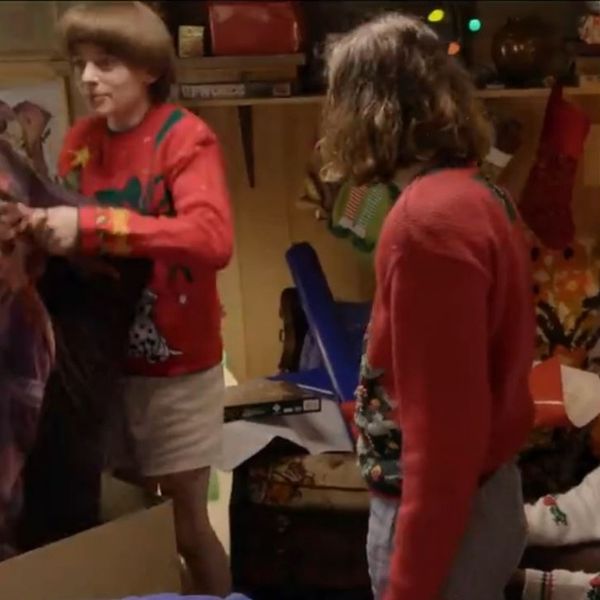September, 2000, HANOVER, Germany - What a perfect combination it was! A Star Trek convention and a World Expo, both in the astonishingly engaging city of Hanover, Germany.
Star Trek is a future-oriented show with a philosophy of responsibility for the environment we inhabit. The Hanover World Expo is an international fair with a strategy not only of displaying today's cutting edge technology together with ecological consciousness, but of planning that consciousness into the urban design of the long-term development of Hanover. And the city of Hanover that I visited this month was at once gracious and raucous, urban and sylvan, traditional and boldly moving into the future. It was a fascinating visit and I had a great time.
The Expo Trek convention was a wonderful extended family reunion. I visited with fans who had become friends over the years from the countless conventions and cruises we had shared. But this Star Trek convention was unique. Creative convention organizers par excellence, Dirk Bartholomae and Gerhard Raible, put this one in a huge revival meeting tent on a rustic campground. They included thought-provoking panel discussion topics new to Star Trek conventions on human rights and religious diversity. The topics seemed particularly pertinent in a Germany that is experiencing a disturbing resurgence of neo-Nazi activities. These panels were the sobering issues part of a wholly uplifting convention. The ovation at the conclusion of the closing ceremony, with sunflower presentations, was overwhelming. The fans "transported" me - with no help needed from Scotty at all.
The Expo, too, was transporting in its own extraordinary way - figuratively as well as literally. What first struck me was its size. It was vast. The guides told me it covered 160 hectares, which meant nothing to me. But I could see from the transport pod that carried me high above the expo grounds that 160 hectares was enormous. From this bird's eye view, I saw buildings in the shape of cones, pyramids, cubes, domes and countless other variations on geometric forms. A few even looked like shuttlecrafts and starships. Some were made of glass, others shone metallically and some had shimmering sheets of water cascading down its skin. They were strikingly futuristic. The guide told me that the theme of the Expo was "Humankind - Nature - Technology: A New World Arising."
All of the pavilions, however, were not avant-garde New World. Some, like those representing Bhutan, Thailand and Nepal, were decidedly traditional. They recreated richly ornate, time-honored temple structures of their respective cultures. Yemen even built a replica of a middle-eastern palace surrounded by a swarming market bazaar. They looked strangely anachronistic, and, to me, rather unexciting.
The most successful pavilions, I thought, were the ones that most imaginatively addressed the use of technology in humankind's relationship to nature. The Japan Pavilion was a spectacular example. It was an immense structure, but at the same time, light, graceful and undulating. The soaring vault-like construction was made entirely of recycled paper. The support structure members were made of paper rolled up tight and hard into rods as strong as bamboo poles. These brown bamboo-like tubes were woven in great arches to shape the multi-story structure. A white, translucent, weather resistant skin made of a combination of paper and plastic covered this construction. The brown bamboo-like poles formed an elegantly lacy pattern outlined by the soft white natural light seeping through the luminous skin. The pavilion was altogether fresh, strikingly contemporary and subtly Japanese in its aesthetics.
The pavilion representing the Netherlands also impressed me. The structure covered only 10 percent of the land. The rest was a vast garden landscape representing the varied flora of Holland. This land use illustrated the Dutch talent for making optimum use of their scarce land reclaimed from the sea. The pavilion itself was a wondrous structure stacked onto six levels, each lush with the elements of nature. I took the elevator to the top and gradually worked my way down either ramps or stairways. The roof level was a body of water with a grassy island in the middle with windmills as an alternative form of energy production. I descended to the next level, which was a theater and exhibition area sheltered from the outside by a curtain wall of water representing rainfall. The next level down was a living forest with real trees imported from Holland. The support structure holding up the upper levels were natural tree trunks. Each descending level artfully displayed the diverse flora of the land and the peoples' interrelationship with nature. The Netherlands Pavilion succeeded wonderfully in presenting virtually every facet of the life of the Dutch people and capturing the theme of the Expo in a limited space.
Limited space is a challenge but so is time. I had only scratched the surface of this gigantic exposition. There were many other tantalizing pavilions I wanted to visit but time was my great limitation. What I did experience, however, was dazzling. I will savor the memory for a lifetime.
I wanted to make time for Hanover itself. The city was a delightful discovery. Among Germans, Hanover has the reputation of being a staid, rather boring municipality. I discovered that to be totally false. The people were warm and gracious. The hospitality of Claudia Wolff and her mother Karin, both natives of Hanover and fans who have become friends, and a host of others like Sussanne, Andreas, Jan, and Filip, was terrific. Their love for Hanover was infectious. I came to love the city as well.
Hanover is most certainly not a staid city. I was introduced to how wildly riotous it can be on a Saturday afternoon. From morning on, I kept hearing an unrelenting, rhythmic drumbeat off in the distance. It seemed to be coming closer to my hotel. I asked the clerk at the reception desk about it. He smiled a cryptically insinuating smile and informed me that it was the Reincarnation Parade held annually in Hanover. It sounded like some religious observance to me. When the parade finally arrived, however, wildly thumping dance music and all, I discovered to my wide-eyed amazement that what I had thought to be a spiritual pageant was, instead, the most outlandish rave parade I had ever seen. Actually, it was the first one I'd ever seen -- mile after unending mile of writhing, swaying bodies - some with very little on - dancing in sheer ecstasy. In fact, more than a few seemed to be on some chemical ecstasy. There were flat bed trucks overflowing with prancing, jiggling bodies. There were double-decker buses crammed with dancing bodies. And the street was a sea of writhing, surging bacchanalia. I'm from Hollywood but Hanover sure showed me a thing or two. One thing for sure - Hanover ain't staid.
And Hanover is urbane. The centerpiece of the city is it's "new" town hall or rathaus built in 1913. The neo-Renaissance building with its high domed cupola looming over the city was damaged badly during the bombing of the Second World War but has been carefully rebuilt. In the great rotunda are four large models of Hanover at different periods in its history. The model of the ruined city in 1945 was a sobering reminder of the madness of war. Andreas and Sussanne took me up to the very top of the building in a unique incline elevator that traverses the curve of the dome. The view from the top was breathtaking. On another morning, Claudia, who works in the city's urban planning department, took me for a walk around the lovely park and pond behind the town hall. She told me that Hanover is a city that loves its parks and gardens and is considered one of the greenest cities in Germany. I agreed. I told her I loved my hotel overlooking a man made lake, Maschsee, with a forested park around it with running, walking and bicycling paths. I jogged around the lake every morning.
Hanover is, as well, a sophisticated modern city. There is a controversial new bank high rise building looming up over the treetops. Some in Hanover are opposed to the glassy new presence on the skyline and others love it. The debate is healthy evidence of the passion the people feel for their city. I think it is a dazzling building and will be an enhancement of the Hanover skyline as well as its streetscape. I'll stay tuned to the debate.
On a trolley ride through the city, I noticed another eye-catching new building under construction. The medium rise office structure was twisted in place with staggered window placements, like a building caught in the middle of a whirlwind. I recognized it instantly as the signature style of Californian architect, Frank Gehry who designed the much-discussed Guggenheim Museum in Bilbao, Spain.
I was visually stopped even by some of the trolley stops. They were contemporary art pieces in themselves. One was a fanciful composition of bright yellow and black blocks. Another looked like a sculptural tortoise shell. We rode past the once controversial, now much loved Nana statues - three colorfully whimsical polyester sculptures of rotund dancing female figures - sort of like sculptural rave dancers in the Reincarnation Parade. Taking the trolley through the streets of Hanover was like a trip through an outdoor contemporary art gallery. Hanover is a bold, culturally venturesome city.
It also seems to be a foresighted planner of its urban development. Claudia showed me a model in the lobby of her office building of a new town called Kronsberg being built in concert with the Expo. The residential units built for the staff of Expo will become housing for the Kronsberg community to come. The new public transportation system built for Expo will also be the transit system to support the new town. The structures built for Expo itself will be reused after the exposition as cinemas, academic institutions, and retail and office buildings that will become a part of the Kronsberg job, shopping, education and service sector. Small community green space is either already built or designed into the future residential districts. Rainwater is planned to be captured and recycled to keep the public parks lush and green. The Expo theme of "Humankind - Nature - Technology: A New World Arising" is not just a trendy slogan. It is indeed the driving philosophy of this fascinating city. I know I'll be coming back to Hanover to see how this New World rises in the future.












